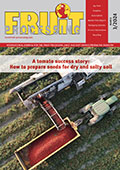Rabobank Report: The Brazilian Ethanol Connection
Rabobank expects cane production in Brazil’s Centre/South region to rebound strongly in the forthcoming 2013/14 harvest. As a result, the region’s production of…
Rabobank expects cane production in Brazil’s Centre/South region to rebound strongly in the forthcoming 2013/14 harvest. As a result, the region’s production of both sugar and ethanol could rise significantly, which in turn would have consequences for the world sugar market, given Brazil’s status as the world’s pre-eminent sugar exporter.
A complete view on the outlook for Brazilian sugar production, however, requires a view on ethanol supply, demand and prices. Rabobank expects that local ethanol prices in Brazil in 2013/14 should on average remain firm, averaging BRL 1.27 per litre (basis ex-mill, net of taxes) over the season, equivalent to a New York raw sugar price of close to USc 19per lb. However, given the typical seasonality of ethanol supply and demand, the bank estimates that prices could go down as low as the equivalent of USc 17 per lb in raw sugar terms during May – July 2013.
Andy Duff, Rabobank analyst said, “Unlike in other producing countries where all cane is made into sugar, in Brazil, the vast majority of mills produce both sugar and ethanol. This means that millers here can vary the output of sugar versus ethanol in response to price expectations. For example, if the margin on ethanol production is expected to be higher than the margin on sugar production, they could increase the percentage of cane milled for ethanol, thus increasing ethanol production at the expense of sugar output. This means that the outlook for ethanol prices in Brazil has the potential to impact Brazil’s sugar production-and anything that influences Brazil’s sugar production is bound to impact the outlook for world sugar prices.”
“This connection is particularly important this year because Brazil is forecast to have a bumper cane crop at a time when global sugar supply is already abundant. This, along with the recent announcement of a 6.6 percent increase in Brazilian ex-refinery gasoline prices is prompting discussion of how low world sugar prices could go in 2013”, Duff added.
The combination of very high world sugar prices in 2010 and 2011, and favourable growing conditions in many parts of the world, had led to a dramatic increase in world sugar production, creating a large global surplus last year and expectations of a similarly large global surplus this year.
In Brazil, cane production has been below trend for the last two years, but all indicators currently point to a strong increase in cane production, from 532 million tonnes in 2012/13 to as much as 580 million tonnes in 2013/14.
Rabobank suggests that the arbitrage between sugar and ethanol in Brazil might create a layer of resistance to further downward pressure on world sugar prices. This arbitrage would involve an increase in ethanol production, putting downward pressure on ethanol prices, and reducing Brazilian sugar production and export availability which would help support sugar prices.
For more information about this publication please contact its author Andy Duff:
Andy.Duff@rabobank.com +55 11 5503 7235
For other information, please contact Rabobank press office:
K.Verheul1@rn.rabobank.nl +31 30 21 66918









